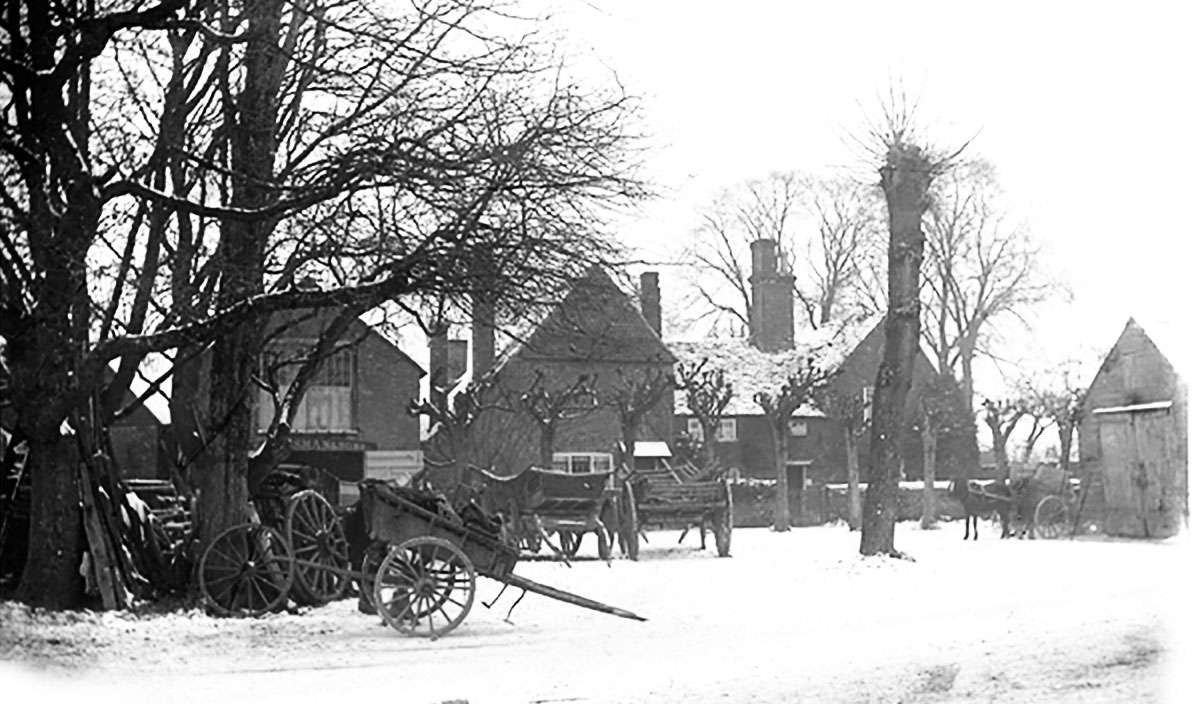
The wheelwright’s yard in 1904
One of the most peaceful corners of Cranleigh today was one of the busiest 200 years ago. The area is behind the Arts Centre, towards Ewhurst Road, and it was more open and uncluttered before the house called ‘Little Causey’ was squeezed in.
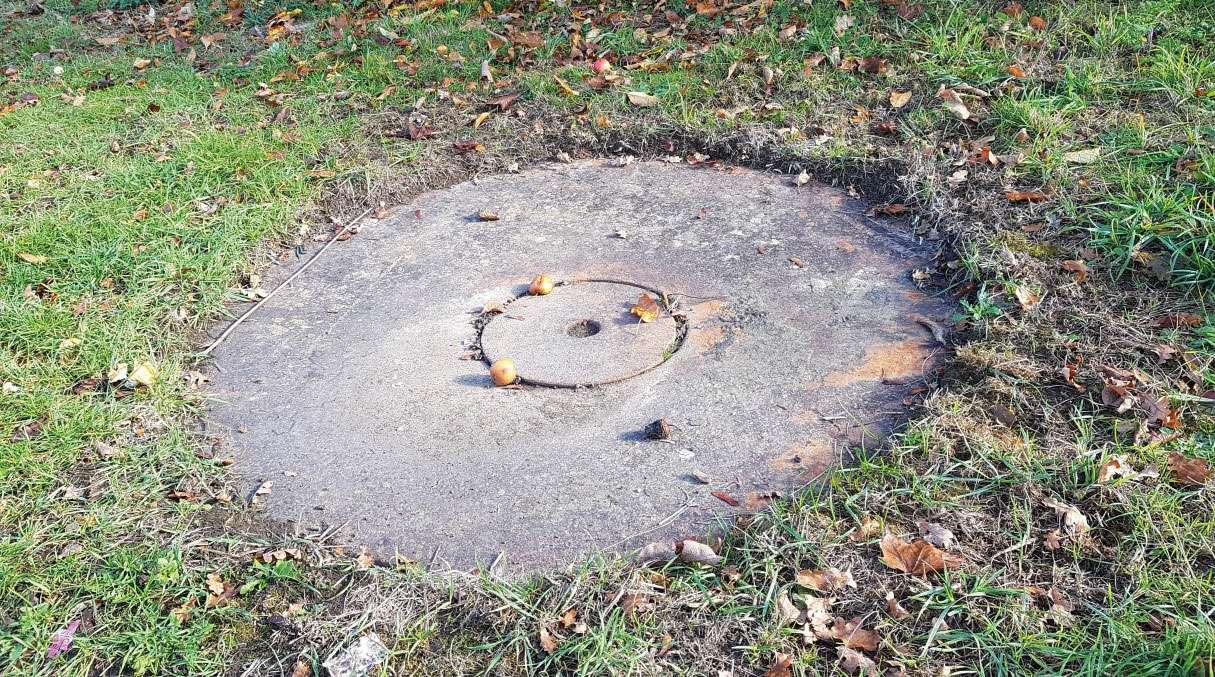
An essential person in any village for hundreds of years was the wheelwright, who had the skill to make wagons, carts and barrows. Just think of all the surnames derived from him: Wheeler, Wheal and Wayne (a wain is a wagon), Wright, Cartwright and Wainwright. Making a wheel was a complex skill which took years to master.
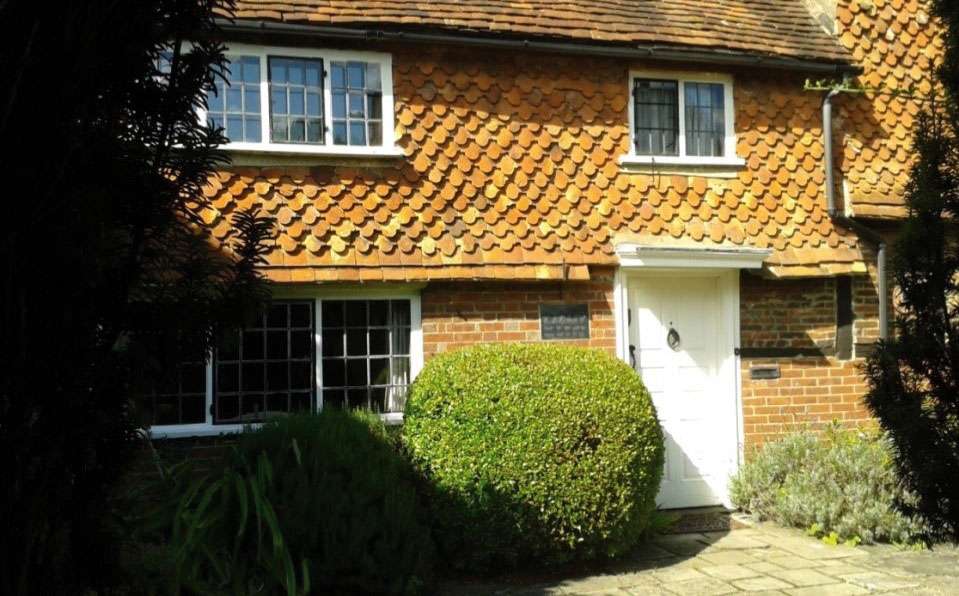
The Causey (2017), formerly the wheelwright’s house
The wheelwright’s house is still standing, now a beautiful home called ‘The Causey’, and next door is the wheelwright’s coach-painting workshop which has become its garage. His forge is opposite the workshop, and is now the garage of ‘Little Causey’.
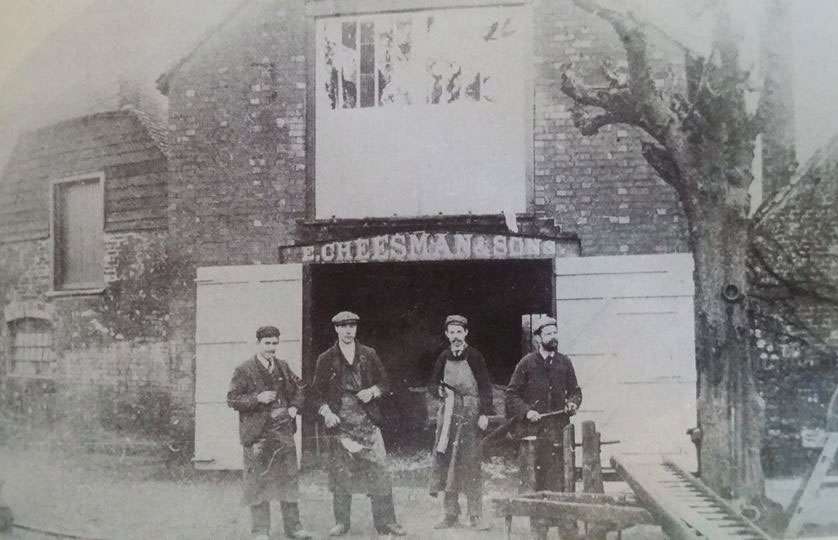
Early 20th century: three of the Cheesman family, plus a lad
In front of the workshop was the wheelwright’s yard. The photo of 1904 helps us to visualise it. Stacked against the wall on one side were planks of wood of different types and sizes, maturing under cover until they could be used. In the yard were carts and barrows in various stages of manufacture or repair, with spare wheels leaning against buildings or trees. And most likely there was a saw pit – seven or eight feet deep and long and narrow, with brick sides and a ladder, over which a tree could be placed for sawing into planks. A pair of sawyers would be called in when needed: one of them balanced on the tree, holding one end of a long two-handled saw, while the other stood in the pit, controlling the bottom end of the saw, and getting smothered with sawdust as the planks were sawn.
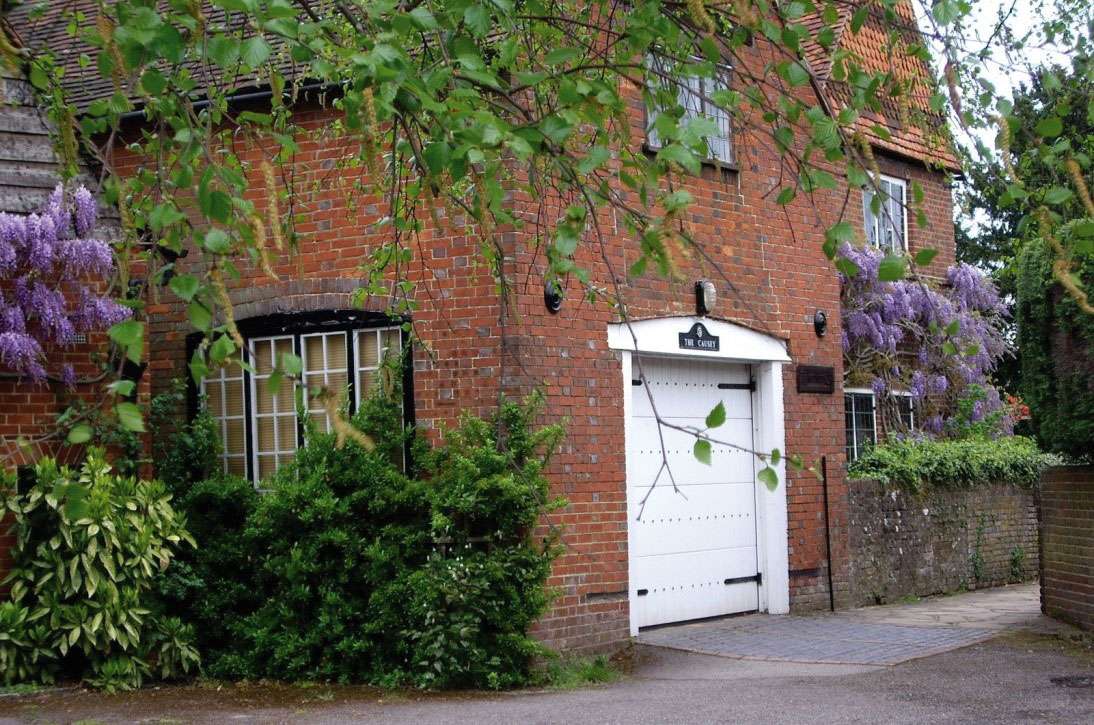
The wheelwright’s coach-painting house, now the garage of ‘The Causey’
A blacksmith was an essential partner for the wheelwright, as the final stage in making a wheel was to put a metal rim tightly around it to hold the spokes securely in place and to protect the wood. The forge at the Cranleigh wheelwright’s was built only around 1900. Before that, wheels had to be carried to a blacksmith, and the nearest one worked on Luck’s Green, just off what is now Mead Road. The ‘tyring plate’ on to which the wheel was fixed can still be seen there. The blacksmith would heat the rim in his furnace and then carry it out, steaming and glowing, and hammer it around the wooden wheel.
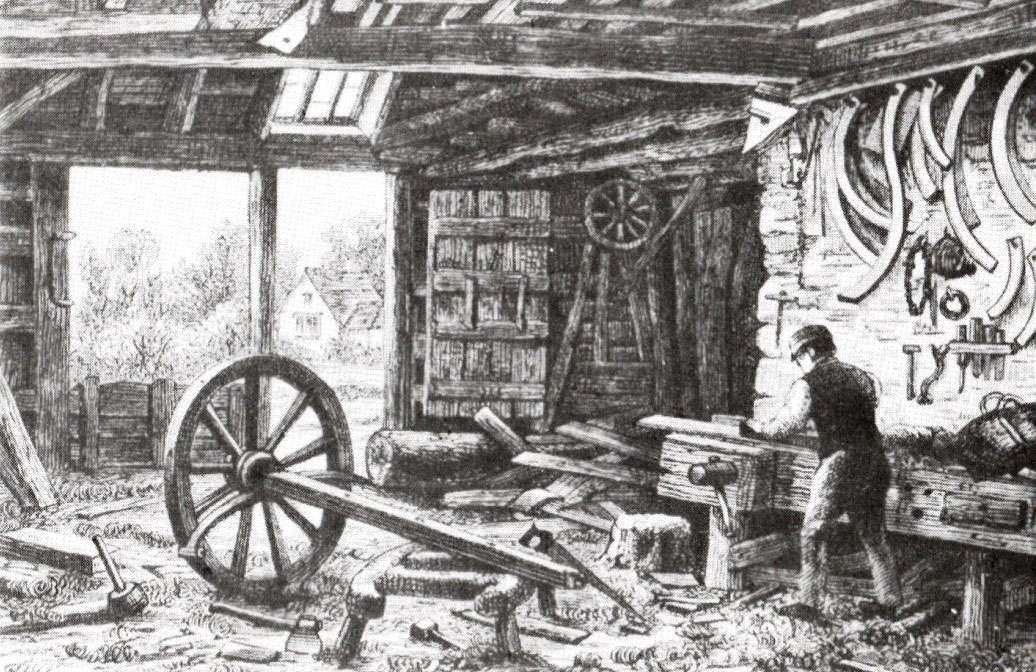
A wheelwright’s shop in Shere, an illustration from a children’s book of 1887 (Jocelyn Bailey, Village Wheelwright (Shire Pubns.))
Cranleigh people of all sorts made their way to the wheelwright’s. They might need a pair of crutches, a coffin, a painted sign, an oven lid or a set of tables. Mr Thomas Child, who ran a boarding school where Mann’s coffee house is, needed a clothes chest; Miss Harriet Morgan, the heiress at Knowle, needed a milking stool. Farmers frequently ordered plough shares or harrows, and repairs to their equipment. But the real money was in making wagons (four wheels) and carts (two wheels). These were made to the customer’s own specifications. Mr Killick, the miller at the windmill on the Common, ordered a basic cart for £4, but a ‘market cart’ cost £13. Wagons, involving a huge amount of work, cost from £10 10s to £25, which the customer paid in three instalments.
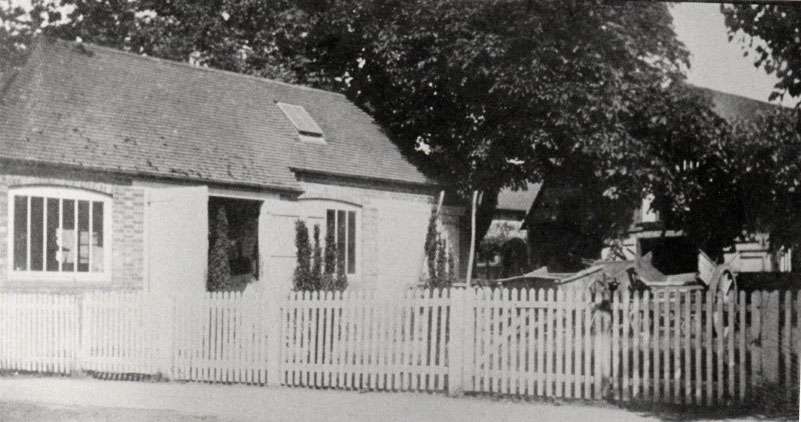
The wheelwrights’ own forge, built after 1893, with wagons and carts in the yard
We know all these details because the account book of James Puttock, wheelwright from 1820, still survives. It is in the possession of Mr Brian Cheesman, whose ancestors succeeded the Puttock family in the wheelwright’s business, and it is a marvellous source for life in Cranleigh.
Was it a profitable concern? It seems to have been. James Puttock’s son, who succeeded him, retired at 40 and moved to the White House on the Common – a very prestigious address. The Puttocks had cannily invested their earnings in property.
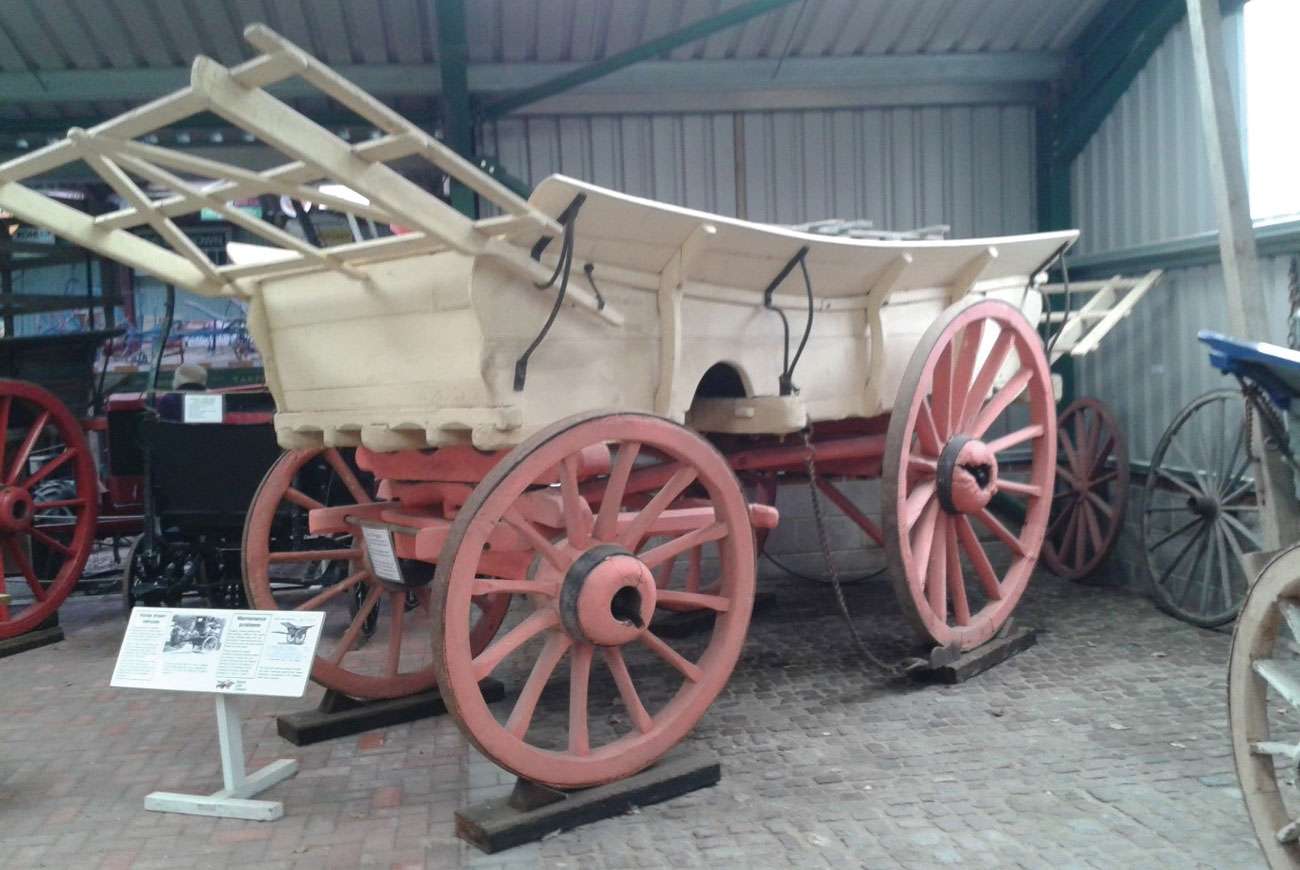
A wagon, painted in Surrey colours, at Tilford Museum of Rural Life
Alas, by the end of the nineteenth century, the railway, bicycle and motor car were taking over from hand-made wooden vehicles, and the wheelwright’s business saw a rapid slump. Around 1920, it moved away from The Causey, and focused on car body restoration and sign painting. The area which had seen so much activity now became just a picturesque and quiet corner.
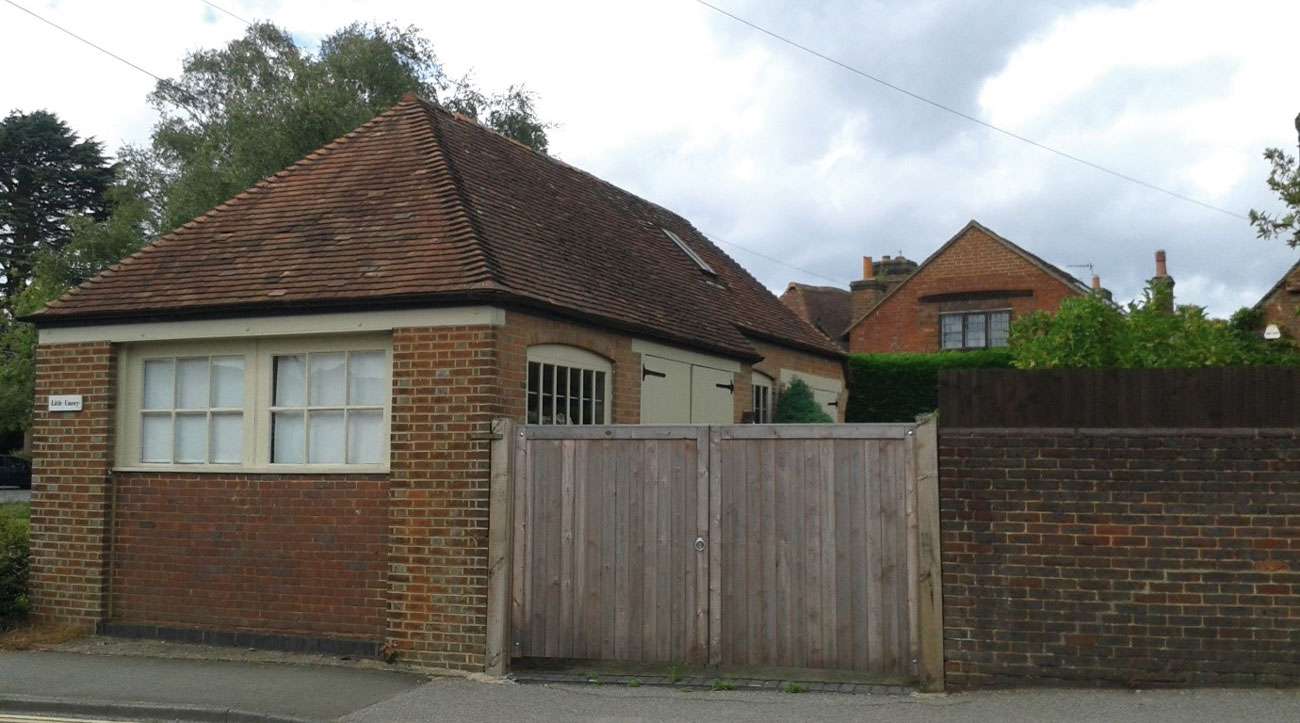
The Cranleigh History Society meets on the second Thursday of each month at 8.00pm in the Band Room. The next meeting will be on Thursday April 9th, when Stephen Dennison and Mike Payne will speak on ‘From Victorian School to Village Arts Centre’.






